
Roots
The very notion of strong, long textured hair carries an enduring resonance, a whisper from generations past that echoes through time. For those of us with hair that coils, kinks, and waves in its own intricate dance, this question is not merely a query about growth; it is an invitation to explore a profound heritage. It asks us to look back, not with a simple glance, but with reverence for the wisdom held within ancestral hands, the very hands that shaped and nurtured hair in ways that spoke to identity, community, and spirit.
This journey into how ancient communities kept textured hair long and strong is a return to source, uncovering the biological and cultural foundations that sustained our strands long before modern conditioners and serums. It acknowledges hair as a living archive, each curl a testament to practices honed by time and necessity, practices that tell stories of resilience and beauty.
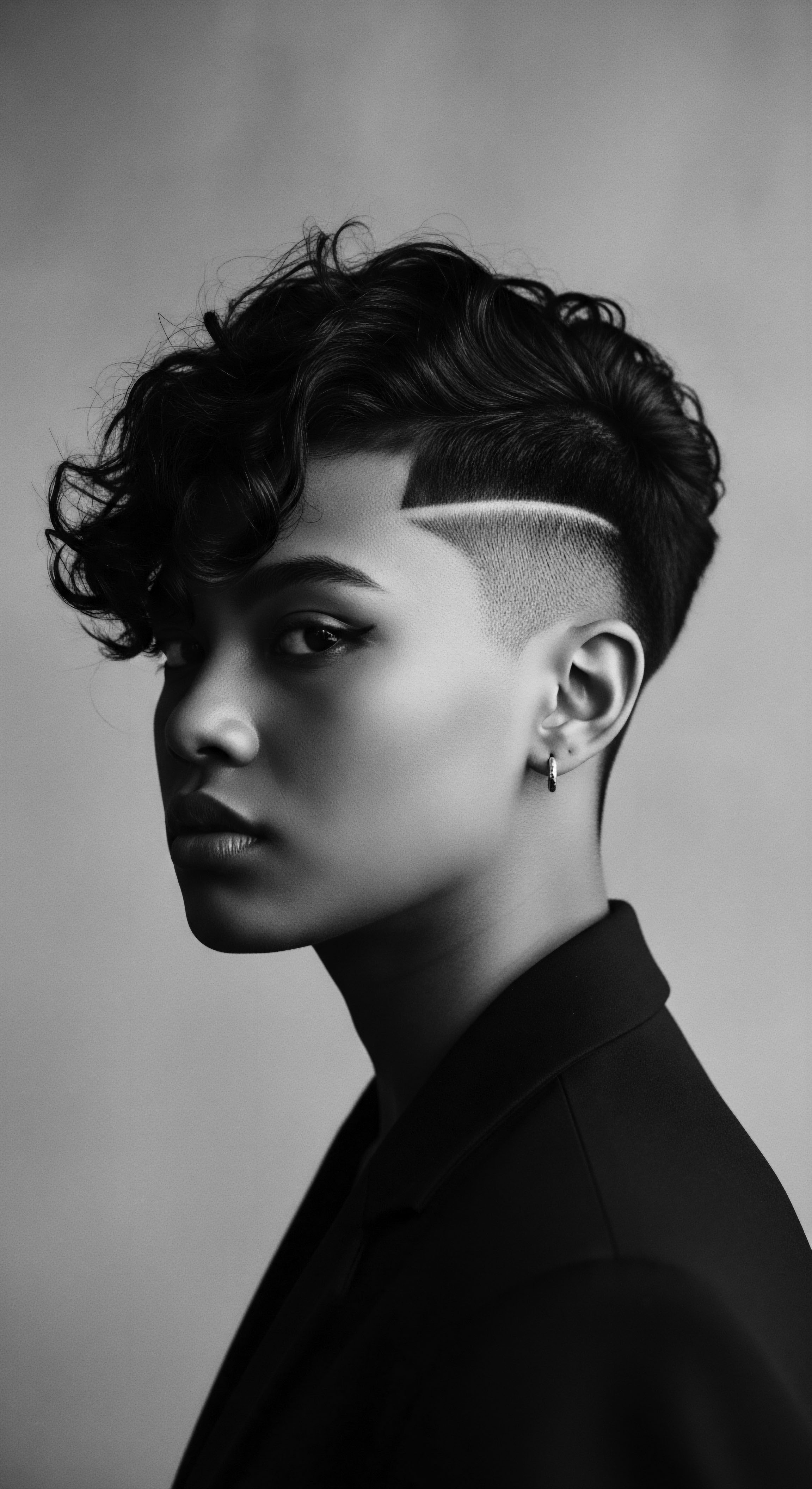
Hair Anatomy and the Ancestral Lens
Textured hair, at its elemental core, possesses a distinct anatomical blueprint. Its elliptical or flattened cross-section, coupled with varied angles of follicle emergence, gives rise to the mesmerizing spectrum of curl patterns we recognize today. This unique structure, with its twists and turns, often means that natural oils produced by the scalp find it more challenging to travel down the hair shaft, making textured strands naturally prone to dryness. This inherent characteristic, understood intuitively by ancient peoples, shaped their approach to care.
They observed the hair’s tendency toward dryness and breakage, responding with remedies that were deeply connected to their immediate environment and the wisdom passed down through generations. The presence of melanin, too, the pigment that lends its rich color, plays a subtle but significant role in the hair’s inherent properties, a connection to the sun and the earth that many ancestral traditions acknowledged.
Ancient communities understood textured hair’s intrinsic needs, particularly its tendency towards dryness, shaping their care practices with natural remedies and intuitive knowledge.
Consider the cuticle, the outermost layer of the hair shaft, resembling overlapping scales. In textured hair, these scales tend to be more lifted, offering a pathway for moisture to escape and external elements to enter. This biological truth informed practices centered on sealing the cuticle, on retaining vital hydration.
It was not a scientific understanding in the modern sense, with microscopes and biochemical analyses, but a deep, experiential knowledge gained from generations of observation and practice. They learned that nourishing ingredients, applied with mindful intention, could help the hair resist the harsh realities of their climates, whether desert heat or humid climes.

The Essential Lexicon of Textured Hair
While modern systems classify hair into numerical and alphabetical types, ancient communities possessed their own rich vocabulary, one steeped in social, spiritual, and communal meaning. Hair was a visual language, a living canvas that communicated stories without a single word. What we now call “coily” or “kinky” hair might have been described by its likeness to specific plant forms, to the wool of a particular animal, or to the intricate patterns seen in nature. These descriptions were not about a dry classification, but about connection and recognition within a shared cultural context.
- Adornments ❉ Items like beads, shells, and metals used to embellish hairstyles, often signifying status, age, or spiritual beliefs.
- Protective Styles ❉ Hair arrangements such as braids and twists designed to guard the hair from environmental damage and promote length retention.
- Hair Butter ❉ A whipped mixture, sometimes including animal milk or fat, used by various communities for moisturizing and maintaining hair.
The very act of naming a style or a hair type carried weight, a reflection of collective values. The language they used for hair was not abstract; it was anchored in the visible world around them, in the elements that sustained their lives and shaped their identities. This intrinsic link between hair and identity was a cornerstone of their existence.

Hair Growth Cycles and Influencing Factors
The rhythm of hair growth – anagen, catagen, and telogen phases – is a biological constant. Yet, ancient communities understood, perhaps through observation and intuition, that this cycle was not isolated from the larger ecosystem of the body and environment. Nutritional adequacy, often dictated by local food sources, played a significant role. Diets rich in proteins, essential fats, and vitamins, derived from indigenous crops and animal sources, provided the building blocks for keratin, the primary protein component of hair.
A diet centered on whole foods, unadulterated by modern processing, naturally contributed to the internal conditions necessary for strong hair growth. (Shah, 2021)
Environmental factors were also deeply integrated into their hair care strategies. Communities residing in arid regions, for instance, developed techniques to shield hair from sun and wind, often by applying natural oils or creating intricate protective styles. Humid environments might have led to methods that managed moisture absorption, preventing frizz and breakage. The wisdom of these communities resided in their ability to adapt and innovate, drawing from the natural resources available to them to create care regimens that supported the hair’s natural growth patterns and intrinsic strength.

Ritual
The legacy of textured hair care, passed down through generations, is a story told not just in biological terms but through ritual and artistry. The journey of keeping hair long and strong was a community endeavor, a daily practice imbued with cultural meaning and deep respect for the strand itself. These were not casual acts; they were ceremonies of care, connection, and continuity, where every braid, every application of oil, spoke volumes about identity and belonging. The techniques and tools that sustained ancient communities were not merely practical; they were an expression of collective wisdom, shaping the hair and the very essence of a people.

Protective Styling as Ancestral Ingenuity
The foundation of hair longevity in ancient communities often rested upon the ingenious practice of protective styling. Styles such as various forms of braids and twists, widely seen across African societies, were not solely for adornment. They served as vital shields, guarding delicate hair from environmental assaults like sun, wind, and dust, while also minimizing manipulation and breakage.
These styles allowed hair to grow undisturbed, retaining moisture and length. Archaeological evidence, such as a rock painting of a woman with cornrows dating back to 3500 BCE in the Sahara desert, highlights the deep antiquity of such practices.
Consider the Himba women of Namibia, whose distinctive hair practices endure to this day. They apply a mixture called Otjize, a paste of butterfat and red ochre, to their hair and skin. This not only protects against the harsh desert sun and insects but also holds the hair in thick, braided locs, which signify age, marital status, and social standing. The very application of otjize, often perfumed with aromatic resin, forms a central part of their daily beautification and protection.
Protective styles, like ancient braids and locs, functioned as more than aesthetic choices; they were essential for preserving hair length and vitality against environmental elements.
The art of hair threading, prevalent in West and Central African societies, represents another form of protective styling. Hair is wrapped with cotton or synthetic thread from root to tip, a technique that requires no extensions yet offers length retention and nurtures natural hair health. It serves as a guardian against breakage and promotes growth. These practices underscore a deep understanding of hair’s needs within diverse environmental contexts.
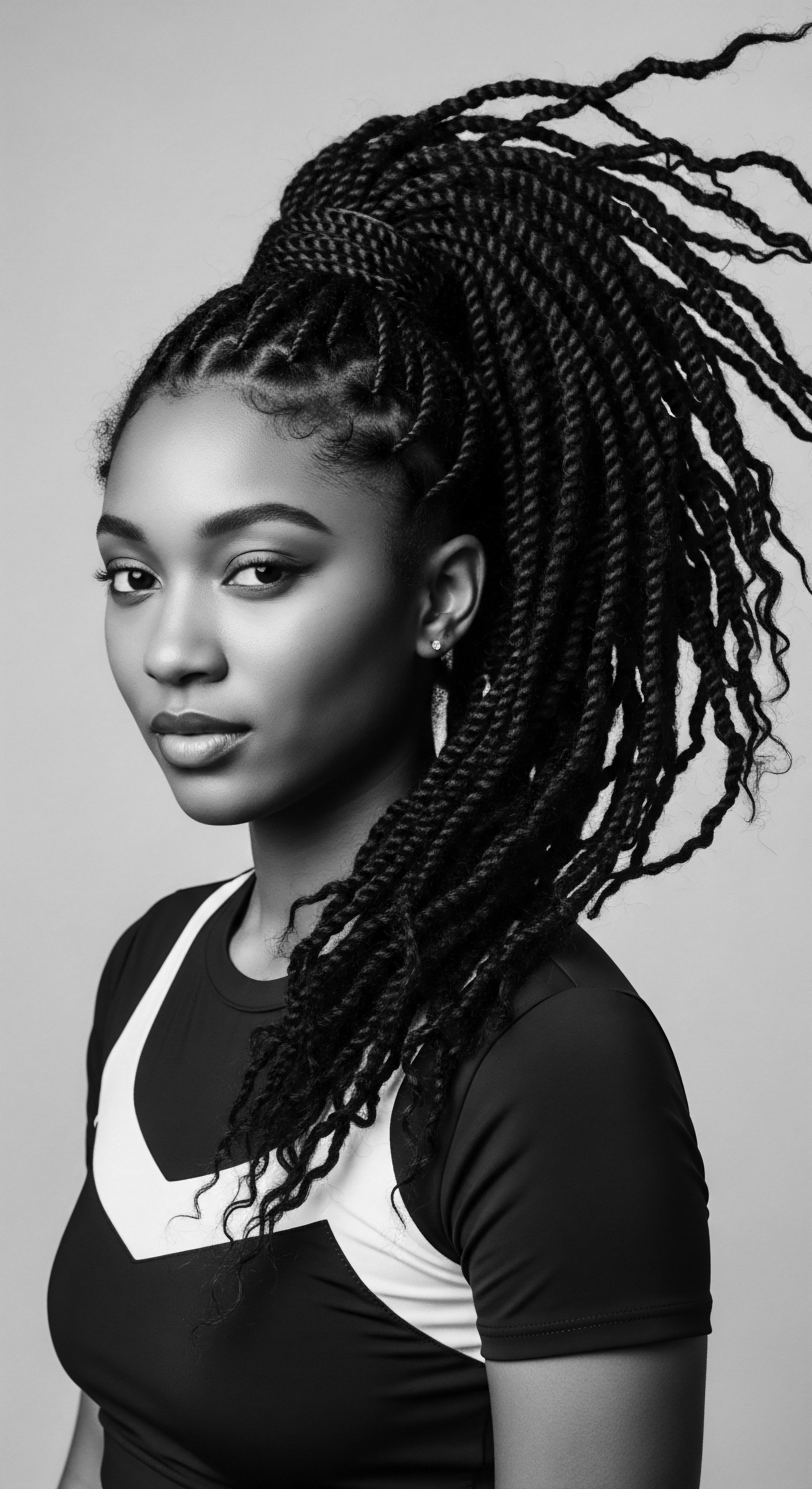
Natural Styling Techniques and Ancient Definitions
Beyond long-term protective styles, ancient communities engaged in natural styling techniques that celebrated the inherent texture of their hair. The precise definition of coils and curls, or the deliberate shaping of a natural silhouette, was achieved through mindful application of natural substances and adept finger manipulation, rather than harsh chemicals or excessive heat.
For instance, the use of various plant-derived oils and butters was a consistent theme across many cultures. In ancient Egypt, castor oil was a staple, used to condition and strengthen hair, often mixed with honey and herbs to promote growth and shine. Olive oil was equally valued in ancient Greece and Rome for similar moisturizing and strengthening properties, often infused with herbs like rosemary and lavender and massaged into the scalp. These practices were not just about aesthetics; they supported hair health, encouraging length and resilience.
| Ancient Practice Hair Oiling |
| Traditional Application and Purpose Regular massage with natural oils (e.g. coconut, castor, olive, argan) for nourishment, strength, and improved scalp circulation. |
| Contemporary Relevance Remains a foundational practice in natural hair care globally for moisture and scalp health. |
| Ancient Practice Protective Braiding |
| Traditional Application and Purpose Intricate styles (cornrows, locs, twists) to guard hair from environmental damage, reduce manipulation, and promote length retention. |
| Contemporary Relevance Widely adopted protective styles within textured hair communities to retain length and health. |
| Ancient Practice Herbal Rinses/Masks |
| Traditional Application and Purpose Use of plant extracts (e.g. amla, bhringraj, hibiscus, henna) for cleansing, strengthening, conditioning, and scalp treatment. |
| Contemporary Relevance Inspiration for natural hair masks, DIY treatments, and ingredient sourcing in modern products. |
| Ancient Practice Head Coverings |
| Traditional Application and Purpose Fabric wraps used for protection from elements, hygiene, and as cultural/social markers. |
| Contemporary Relevance Modern use of satin bonnets, scarves for nighttime protection and style preservation. |
| Ancient Practice The enduring wisdom of ancient hair care practices transcends time, offering foundational principles for nurturing textured hair. |

The Complete Textured Hair Toolkit
The tools of ancient hair care were born from the natural world and the ingenuity of human hands. Unlike today’s array of specialized implements, ancient toolkits were simpler, often crafted from readily available materials, yet they were profoundly effective in maintaining hair length and health.
- Combs ❉ Often carved from wood, bone, or ivory, these were used for detangling and distributing natural oils. Ancient Egyptian combs, some dating back to 3900 BCE, display intricate designs, suggesting their importance beyond mere utility.
- Hairpins and Adornments ❉ Used not just for securing styles but also as symbols of status or spiritual connection. These included metal plates, beads, shells, and even feathers. The Himba, for example, incorporate goat hair into their elaborate plaits for styling and cultural significance.
- Grinding Stones and Mortars ❉ For preparing natural ingredients like herbs, clays, and ochre into pastes and powders for application. The Himba use these to prepare their otjize mixture.
The creation of these tools was itself a cultural act, reflecting local resources and artistic traditions. The materials chosen often had symbolic meaning, further deepening the ritualistic aspect of hair care.

How Did Traditional Hair Care Practices Shape Ancient Community Identity?
Hair in ancient communities was a profound visual language, a marker of identity, status, and belonging. The way hair was styled could indicate age, marital status, social rank, tribal affiliation, and even spiritual beliefs. For example, the Fulani people of West Africa used hairstyles to display social status and age, with married women wearing specific plaits adorned with pearls and jewelry. Among the Yoruba people of Nigeria, intricate hairstyles symbolized community roles, and hair itself was considered sacred, a medium connecting individuals to their ancestors.
The act of braiding was a communal activity, a social ritual that strengthened bonds and passed down cultural knowledge, serving as a space for storytelling and sharing. This collective engagement with hair care solidified community identity and ensured the continuity of these practices.

Relay
The deep wisdom of ancient communities concerning textured hair was not simply about isolated techniques or a collection of ingredients; it was a holistic approach, a comprehensive way of life that understood the intricate connection between hair health, overall well-being, and ancestral practices. This understanding was relayed through generations, a living current of knowledge that informed daily regimens, nighttime rituals, and solutions for common hair challenges, all profoundly shaped by their heritage. The hair was a reflection of the individual’s inner state and their connection to the wider world, a testament to the idea that true vitality begins within.

Building Personalized Textured Hair Regimens through Ancestral Wisdom
Ancient communities, without the aid of modern diagnostics, developed highly personalized hair regimens based on observation, seasonal changes, and individual needs. Their understanding of hair was rooted in an intuitive awareness of the body’s balance and the environment’s offerings. This meant recognizing when hair was dry or brittle and responding with specific oils or plant applications.
The practice of oiling, for instance, was foundational across many cultures. In India, Ayurvedic traditions advocate regular scalp massages with natural oils like coconut, almond, and shikakai to promote growth and strengthen roots. These oils penetrate the hair shaft, delivering nutrients and improving blood circulation, which contributes to length and resilience. The application was not merely functional; it was often a meditative, nurturing ritual, a moment of connection with oneself or with a caregiver.
Beyond external applications, nutrition was understood as a core component of hair vitality. Ancient diets, often comprised of locally sourced, unprocessed foods, naturally provided the proteins, vitamins, and minerals essential for healthy hair growth. (Shah, 2021) The knowledge that protein forms keratin, the building block of hair, was not articulated scientifically, but the practical result of protein-rich diets was observed in strong, resilient strands.
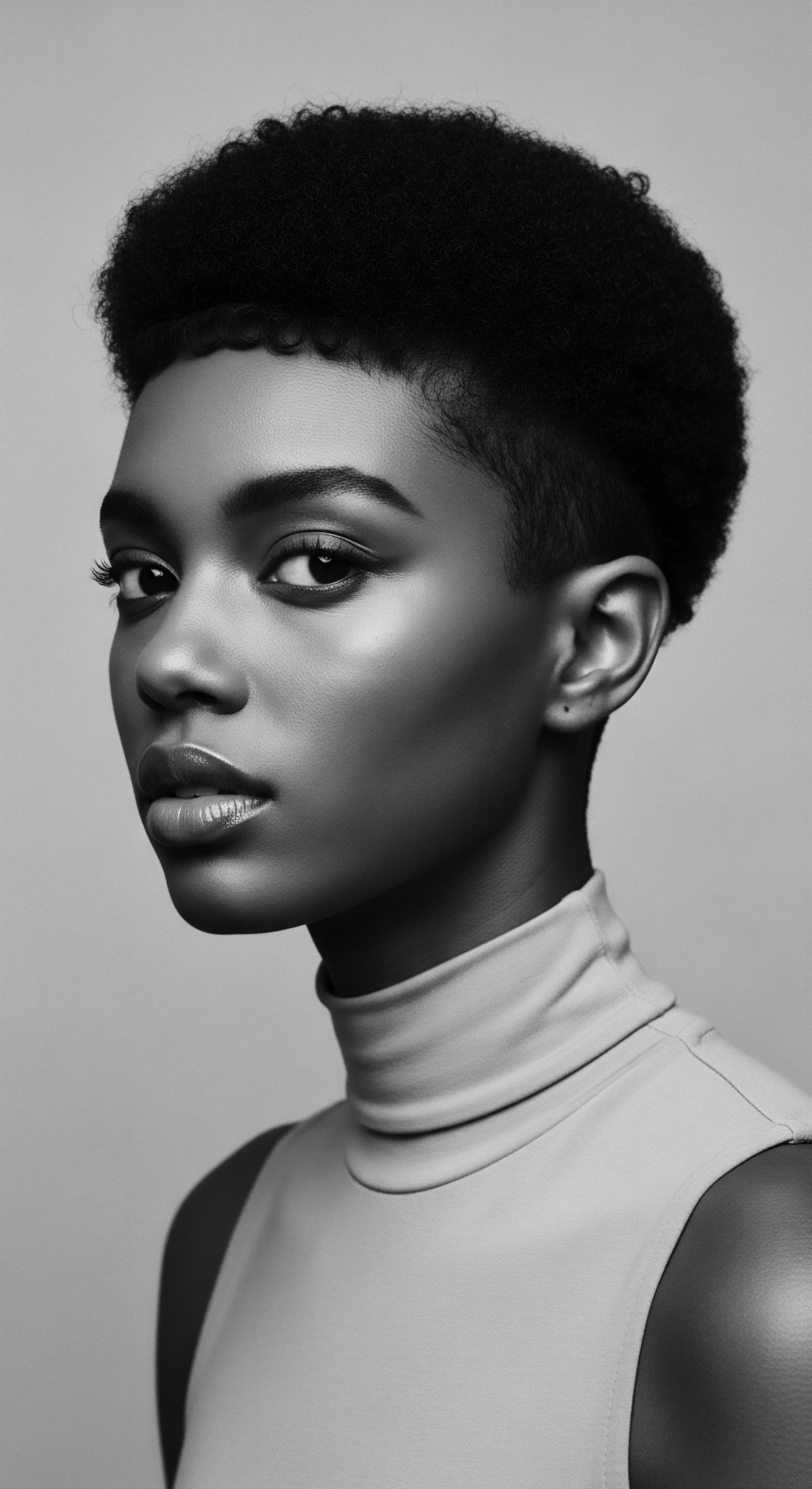
How Did Specific Environments Influence Ancient Hair Care?
Environmental conditions significantly shaped ancient hair care practices, leading communities to develop localized solutions for maintaining length and strength. In arid regions, like those inhabited by the Himba people, a mixture of butterfat and red ochre was applied to hair to protect it from the intense sun and dry air, simultaneously acting as a sealant for moisture. In humid climates, different strategies emerged, perhaps focusing on natural cleansers that did not strip the hair of its natural oils, allowing the hair to breathe while resisting excessive moisture absorption.
The use of specific plants or clays from the local landscape provided tailored protection and nourishment, reflecting an intimate relationship with their immediate surroundings and the resources it offered. This environmental adaptation is a testament to the ingenuity and localized wisdom inherent in ancestral hair practices.

The Nighttime Sanctuary and Bonnet Wisdom
The protection of hair during sleep was an unwritten rule in many ancient traditions, a recognition of the fragility of textured strands against friction and tangling. While the modern satin bonnet is a relatively recent innovation, the principle of safeguarding hair overnight through various coverings or specific styling practices is ancient.
Headwraps and fabric coverings were used for various reasons, including protection from the elements during the day and for preserving styles at night. These coverings could have provided a barrier against environmental dust or cold, similar to how modern sleep caps prevent moisture loss and reduce friction on pillows. The act of securing hair before rest meant less manipulation upon waking, thereby reducing breakage and retaining length. The practice of using specific hair preparations before bedtime, such as oils or balms, also speaks to an understanding that the night offered a period for deep conditioning and restoration, away from the demands of daily life.

Ingredient Deep Dives for Textured Hair Needs
The ancient pharmacopoeia for textured hair was vast, drawn directly from the earth and its bounty. These ingredients were carefully chosen for their properties, often passed down through generations, becoming integral to the communities’ hair care heritage.
- Castor Oil ❉ Widely used in ancient Egypt, this thick oil provided intense moisture and was known for strengthening hair and promoting growth. It served as a protective barrier, especially in dry climates.
- Olive Oil ❉ A staple in Mediterranean cultures, it was massaged into the scalp and hair to nourish, add shine, and prevent dryness. Its fatty acid composition mimicked the natural lipids beneficial for hair health.
- Amla (Indian Gooseberry) ❉ A cornerstone of Ayurvedic hair care, amla was used for scalp nourishment, strengthening hair, and preventing premature graying. Its antioxidant properties contribute to overall scalp vitality.
- Henna ❉ Beyond its use as a dye, henna was valued for its conditioning and strengthening properties, helping to fortify the hair shaft and reduce breakage.
- Shea Butter ❉ In many African tribes, shea butter was (and remains) a crucial moisturizing agent, protecting hair from harsh environmental conditions and making it soft and manageable.
- Chebe Powder ❉ Originating from the Basara Tribe of Chad, this herb-infused mixture is applied to hair to significantly aid length retention by reducing breakage. It works by coating the hair and promoting moisture sealing.

Textured Hair Problem Solving Compendium
Ancient communities faced challenges similar to those experienced today ❉ dryness, breakage, and slow growth. Their solutions, however, were entirely organic, born from centuries of trial, error, and shared wisdom. They observed that certain plant extracts could soothe an itchy scalp, while others could reduce shedding.
For instance, the use of eggs as a hair mask in ancient India was known for its nourishing and moisturizing properties, with the belief that the nutrients in egg yolks could help with hair loss and strengthen hair. Similarly, ingredients like Shikakai, a natural cleanser, were used to gently remove dirt without stripping the scalp’s natural oils, helping to hydrate and relieve dryness. The Himba people even used wood ash for washing their hair, an ingenious solution in water-scarce regions. These methods reveal a practical, resourceful approach to problem-solving, deeply connected to the available natural resources.

Holistic Influences on Hair Health
At the heart of ancient hair care lies a holistic philosophy ❉ hair is not separate from the body or spirit. For many African cultures, hair was a spiritual conduit, a connection to the divine and to ancestors. The top of the head was often considered the entry point for spiritual energy, imbuing hair care with a sacred dimension. This belief meant hair was tended with reverence, not just for its appearance, but for its spiritual significance.
The communal aspects of hair care were also deeply ingrained. Braiding sessions were often social gatherings, opportunities for women to bond, share stories, and pass down cultural knowledge. This social ritual fostered mental and emotional well-being, which in turn supported physical health, including hair health. The very act of caring for hair was a way of reinforcing community ties and preserving cultural identity, a legacy that continues to shape textured hair experiences today.
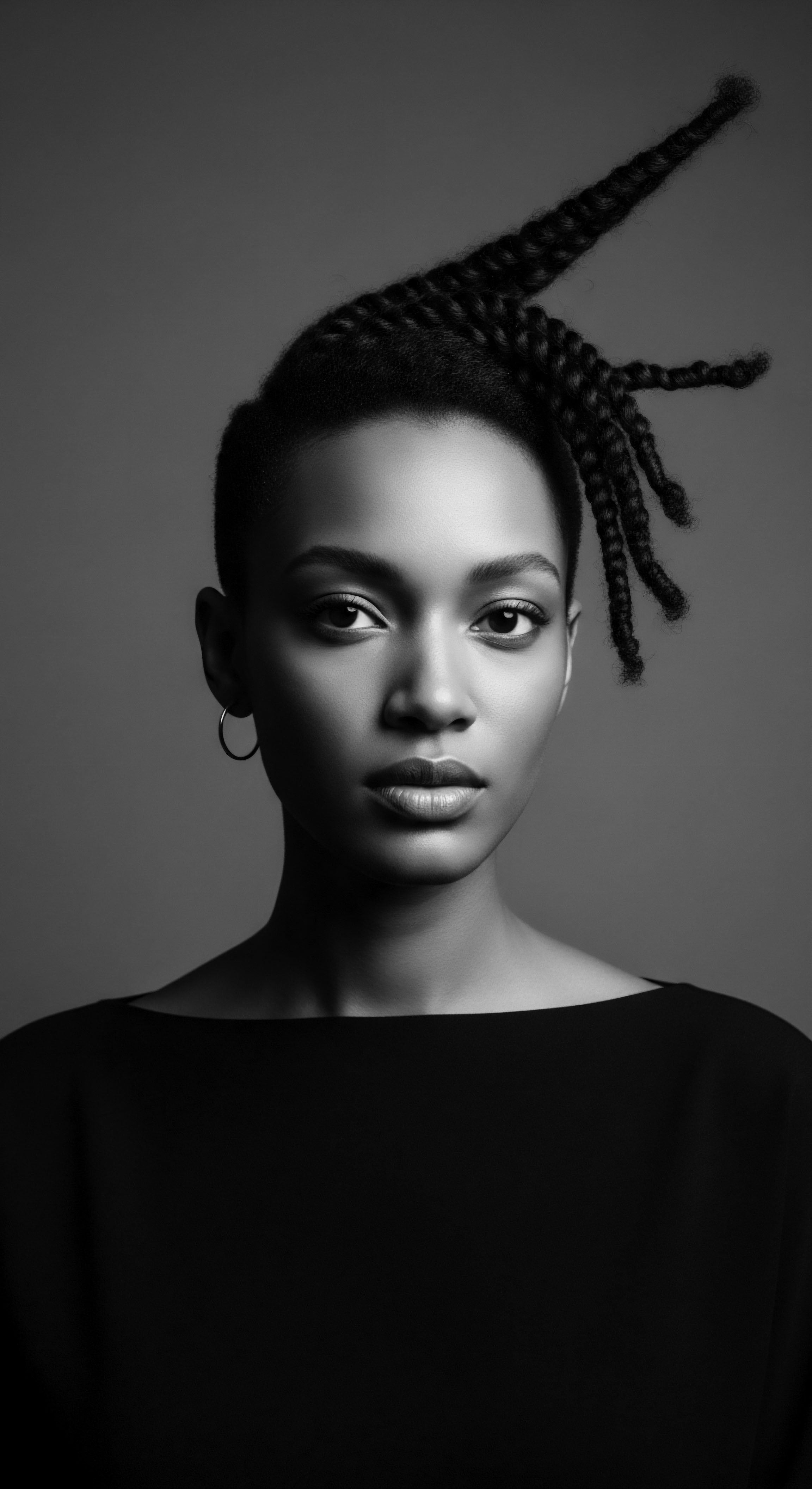
Relay
The deep wisdom of ancient communities concerning textured hair was not simply about isolated techniques or a collection of ingredients; it was a holistic approach, a comprehensive way of life that understood the intricate connection between hair health, overall well-being, and ancestral practices. This understanding was relayed through generations, a living current of knowledge that informed daily regimens, nighttime rituals, and solutions for common hair challenges, all profoundly shaped by their heritage. The hair was a reflection of the individual’s inner state and their connection to the wider world, a testament to the idea that true vitality begins within.

Building Personalized Textured Hair Regimens through Ancestral Wisdom
Ancient communities, without the aid of modern diagnostics, developed highly personalized hair regimens based on observation, seasonal changes, and individual needs. Their understanding of hair was rooted in an intuitive awareness of the body’s balance and the environment’s offerings. This meant recognizing when hair was dry or brittle and responding with specific oils or plant applications.
The practice of oiling, for instance, was foundational across many cultures. In India, Ayurvedic traditions advocate regular scalp massages with natural oils like coconut, almond, and shikakai to promote growth and strengthen roots. These oils penetrate the hair shaft, delivering nutrients and improving blood circulation, which contributes to length and resilience. The application was not merely functional; it was often a meditative, nurturing ritual, a moment of connection with oneself or with a caregiver.
Beyond external applications, nutrition was understood as a core component of hair vitality. Ancient diets, often comprised of locally sourced, unprocessed foods, naturally provided the proteins, vitamins, and minerals essential for healthy hair growth. A common horsetail, for example, known for its silica content, was appreciated by ancient Arabs and Greeks for its contribution to hair strength. (Shah, 2021) The knowledge that protein forms keratin, the building block of hair, was not articulated scientifically, but the practical result of protein-rich diets was observed in strong, resilient strands.
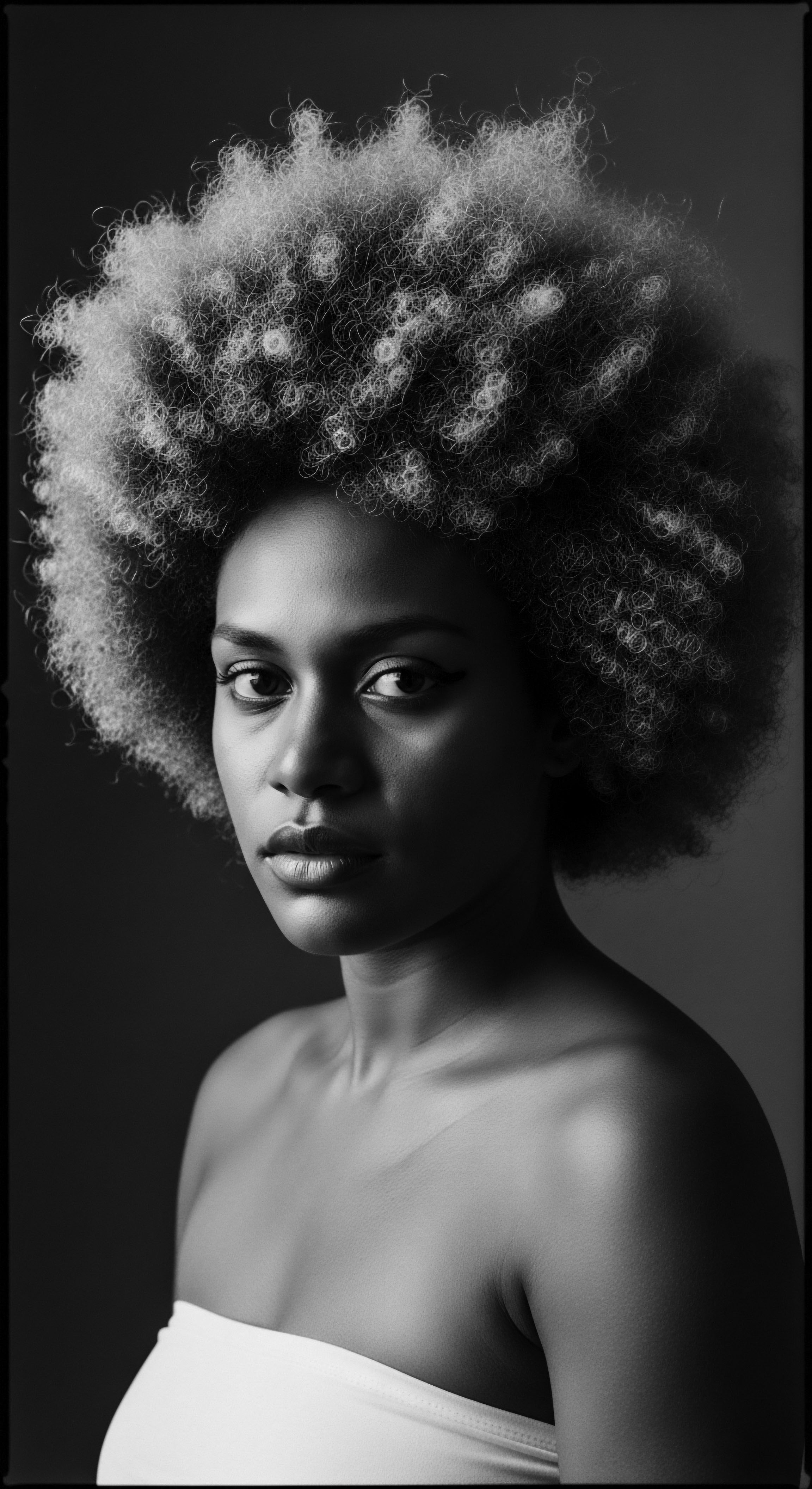
How Did Specific Environments Influence Ancient Hair Care?
Environmental conditions significantly shaped ancient hair care practices, leading communities to develop localized solutions for maintaining length and strength. In arid regions, like those inhabited by the Himba people, a mixture of butterfat and red ochre was applied to hair to protect it from the intense sun and dry air, simultaneously acting as a sealant for moisture. In humid climates, different strategies emerged, perhaps focusing on natural cleansers that did not strip the hair of its natural oils, allowing the hair to breathe while resisting excessive moisture absorption.
The use of specific plants or clays from the local landscape provided tailored protection and nourishment, reflecting an intimate relationship with their immediate surroundings and the resources it offered. This environmental adaptation is a testament to the ingenuity and localized wisdom inherent in ancestral hair practices.

The Nighttime Sanctuary and Bonnet Wisdom
The protection of hair during sleep was an unwritten rule in many ancient traditions, a recognition of the fragility of textured strands against friction and tangling. While the modern satin bonnet is a relatively recent innovation, the principle of safeguarding hair overnight through various coverings or specific styling practices is ancient.
Headwraps and fabric coverings were used for various reasons, including protection from the elements during the day and for preserving styles at night. These coverings could have provided a barrier against environmental dust or cold, similar to how modern sleep caps prevent moisture loss and reduce friction on pillows. The act of securing hair before rest meant less manipulation upon waking, thereby reducing breakage and retaining length. The practice of using specific hair preparations before bedtime, such as oils or balms, also speaks to an understanding that the night offered a period for deep conditioning and restoration, away from the demands of daily life.

Ingredient Deep Dives for Textured Hair Needs
The ancient pharmacopoeia for textured hair was vast, drawn directly from the earth and its bounty. These ingredients were carefully chosen for their properties, often passed down through generations, becoming integral to the communities’ hair care heritage.
- Castor Oil ❉ Widely used in ancient Egypt, this thick oil provided intense moisture and was known for strengthening hair and promoting growth. It served as a protective barrier, especially in dry climates.
- Olive Oil ❉ A staple in Mediterranean cultures, it was massaged into the scalp and hair to nourish, add shine, and prevent dryness. Its fatty acid composition mimicked the natural lipids beneficial for hair health.
- Amla (Indian Gooseberry) ❉ A cornerstone of Ayurvedic hair care, amla was used for scalp nourishment, strengthening hair, and preventing premature graying. Its antioxidant properties contribute to overall scalp vitality.
- Henna ❉ Beyond its use as a dye, henna was valued for its conditioning and strengthening properties, helping to fortify the hair shaft and reduce breakage.
- Shea Butter ❉ In many African tribes, shea butter was (and remains) a crucial moisturizing agent, protecting hair from harsh environmental conditions and making it soft and manageable.
- Chebe Powder ❉ Originating from the Basara Tribe of Chad, this herb-infused mixture is applied to hair to significantly aid length retention by reducing breakage. It works by coating the hair and promoting moisture sealing.
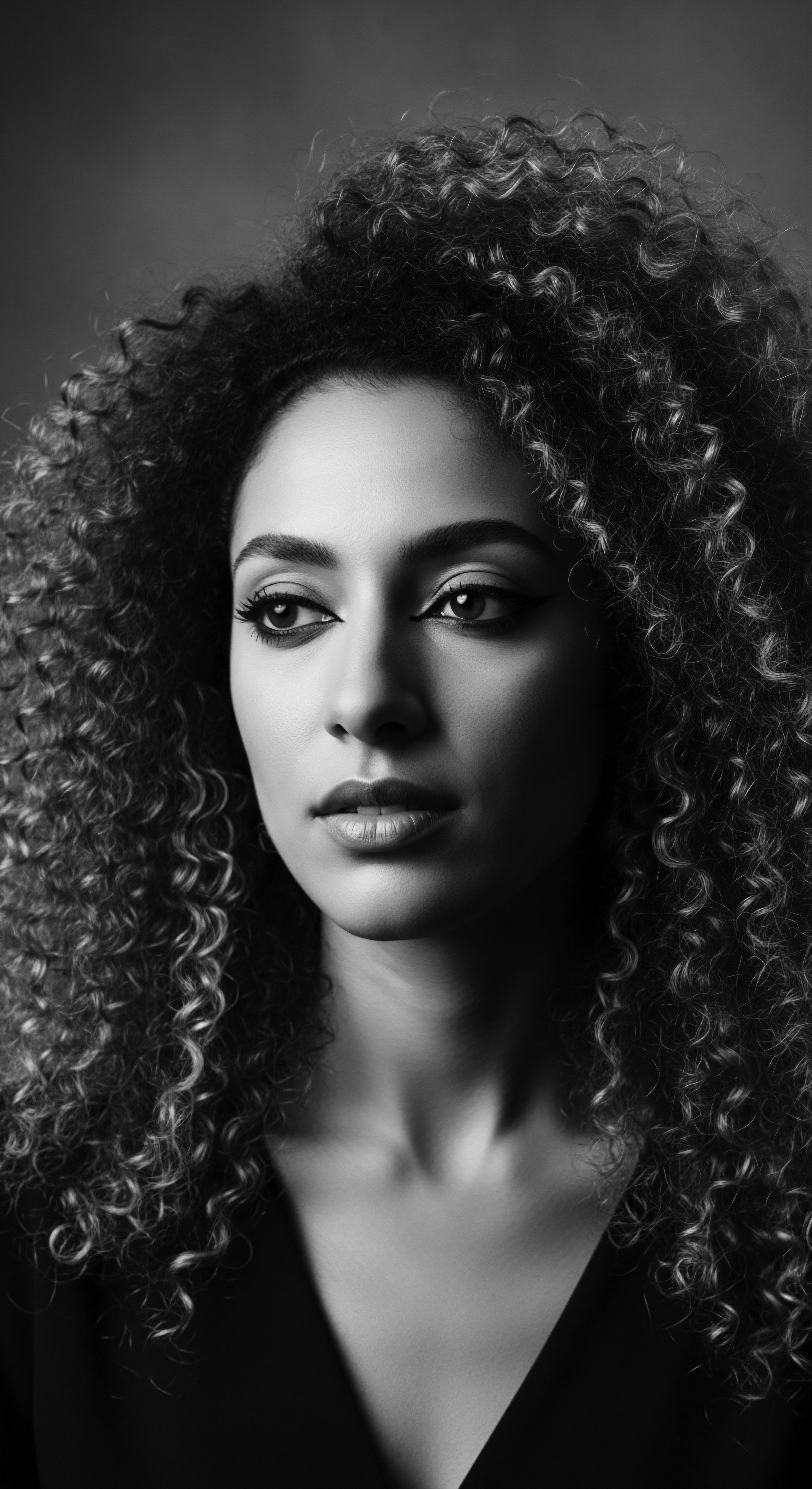
Textured Hair Problem Solving Compendium
Ancient communities faced challenges similar to those experienced today ❉ dryness, breakage, and slow growth. Their solutions, however, were entirely organic, born from centuries of trial, error, and shared wisdom. They observed that certain plant extracts could soothe an itchy scalp, while others could reduce shedding.
For instance, the use of eggs as a hair mask in ancient India was known for its nourishing and moisturizing properties, with the belief that the nutrients in egg yolks could help with hair loss and strengthen hair. Similarly, ingredients like Shikakai, a natural cleanser, were used to gently remove dirt without stripping the scalp’s natural oils, helping to hydrate and relieve dryness. The Himba people even used wood ash for washing their hair, an ingenious solution in water-scarce regions. These methods reveal a practical, resourceful approach to problem-solving, deeply connected to the available natural resources.
Ancestral problem-solving for hair challenges involved resourceful use of natural ingredients, like eggs for nourishment or wood ash for cleansing, adapting to environmental conditions.

Holistic Influences on Hair Health
At the heart of ancient hair care lies a holistic philosophy ❉ hair is not separate from the body or spirit. For many African cultures, hair was a spiritual conduit, a connection to the divine and to ancestors. The top of the head was often considered the entry point for spiritual energy, imbuing hair care with a sacred dimension. This belief meant hair was tended with reverence, not just for its appearance, but for its spiritual significance.
The communal aspects of hair care were also deeply ingrained. Braiding sessions were often social gatherings, opportunities for women to bond, share stories, and pass down cultural knowledge. This social ritual fostered mental and emotional well-being, which in turn supported physical health, including hair health. The very act of caring for hair was a way of reinforcing community ties and preserving cultural identity, a legacy that continues to shape textured hair experiences today.
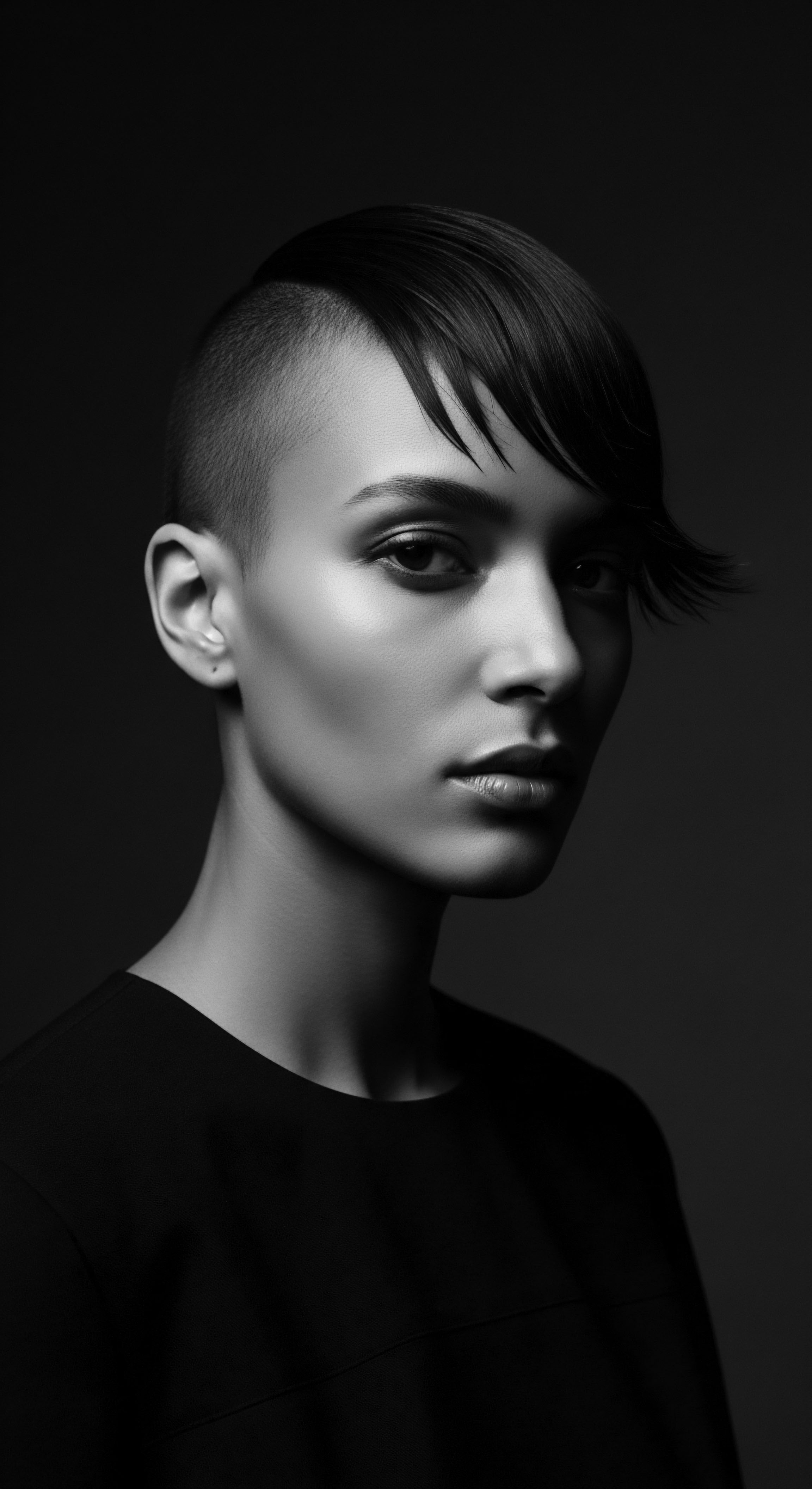
Reflection
The enduring story of textured hair, long and strong, is not merely a chronicle of ancient techniques or forgotten remedies; it is a vibrant, continuing conversation, a deep current flowing from the wellspring of ancestral wisdom to the present moment. Each coil and kink carries within it the memory of hands that nurtured, communities that celebrated, and spirits that found expression through styling. To understand how ancient peoples sustained their strands is to connect with a legacy that transcends time and geography. It is to recognize the ingenuity born of necessity, the profound reverence for nature’s gifts, and the interwoven tapestry of identity and self-care that hair represented.
The practices of old, from the precise partings of cornrows that charted escape routes during the transatlantic slave trade (Odele Beauty, 2024), to the ceremonial oiling of Himba locs, offer more than historical data. They present a philosophy of holistic wellness, reminding us that true strength and length arise from a harmonious relationship with our bodies, our heritage, and the world around us. This ancient wisdom, whispering through every strand, invites us to honor the journey of our hair, not just as a physical attribute, but as a living piece of our shared history, a testament to enduring beauty and resilience.
References
- Afriklens. (2024, November 1). African Hairstyles ❉ Cultural Significance and Legacy.
- Byrd, A. D. & Tharps, L. (2001). Hair Story ❉ Untangling the Roots of Black Hair in America. St. Martin’s Press.
- Clinikally. (2024, June 7). Revitalizing Hair with Ancient Elixirs ❉ Unveiling the Secrets of Hair Oils.
- Fabulive. (2023, January 23). Ancient Indian Hair Care That Works Wonders.
- Fabulive. (2022, December 16). Rediscovering Historical Hair Care Practices.
- Hadithi Africa. (2019, June 17). Namibia’s Himba tribeswomen and their elaborate hairdos.
- JD Institute of Fashion Technology. (2021, June 23). Headwraps ❉ History and Evolution.
- Khumbula. (2024, April 16). A Crowning Glory ❉ Hair as History, Identity, and Ritual.
- Kodd Magazine. (2024, November 1). African hair tells a story and inspires the future.
- Lea Ada. (2025, February 11). Ancient Beginnings ❉ The Early Roots of Hair Accessories.
- Odele Beauty. (2024, January 16). A History Lesson On Hair Braiding.
- Princeton University Art Museum. Hair and the Head. Retrieved from Princeton University Art Museum website.
- Reddit. (2021, August 26). No raw oils and butters vs. Traditional African hair care?.
- Shah, R. (2021, December 7). Impact of Nutrition on Hair Health. The Ancient Ayurveda.
- Shunji Matsuo Singapore Premier Japanese Hair Salon & Expert Haircuts. (2024, March 11). A Hairy Tale of the Past ❉ Unveiling Ancient Hair Treatment Methods You.
- TheCollector. (2022, January 16). Ancient Egypt’s Most Indulgent Beauty Secrets.
- The Earth Collective. (2023, October 6). Essential Hair Care Tips Inspired by Indian Traditions.
- The Guardian Nigeria News. (2022, January 27). Otjize ❉ The Red Beauty Miracle Of The Himba People.
- Umthi. (2023, September 14). The Cultural Significance and Representation of Afro-Textured Hair.
